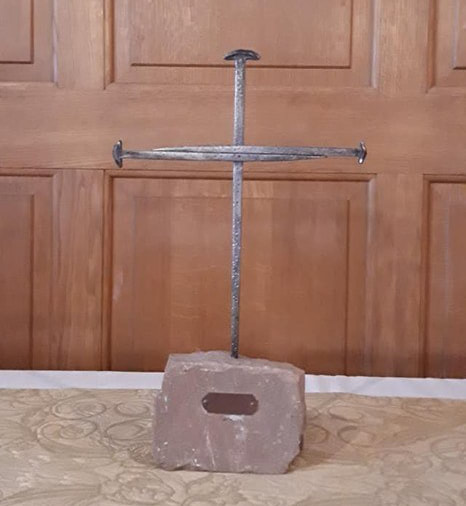|
St Alfege Church in Greenwich, London, is built on the site where Saint Alfege was allegedly killed and a memorial stone marks the spot inscribed with the words “He who dies for justice, dies for Christ.” The current building was not the first church on the site. No one knows when the first was built but records state the second building was built during the 13th century. It is highly likely that Henry VIII (1491-1547) and other Tudor royals were baptised in this church and one of the stained glass windows depicts this event. Another stained glass window depicts Thomas Tallis (1505-85), the “father of English church music”. He was the organist at St. Alfege Church during the reigns of four Tudor monarchs: Henry VIII, Edward VI (1537-53), Mary I (1516-55) and Elizabeth I (1533-1603). On display is an old organ that may date to Tallis’ time. This was replaced after the Second World War, however, the current organ was transferred to the church from Eton College in the year 2000. The second church building was destroyed in 1710 when a gale caused the medieval roof to collapse. A new church was proposed and Nicholas Hawksmoor (1661-1736), a pupil of Sir Christopher Wren (1632-1723), was chosen to be the architect. The building was completed by 1714, however, on 19th March 1941, an incendiary bomb hit the roof of the church and destroyed a lot of the architecture. In 1946, rebuilding began but many of the original features had to be replaced. Fortunately, much of the altar survived the bombing during the Second World War. The iron rails were designed by Jean Tijou, a French Huguenot ironworker who also produced screens for Hampton Court and St. Paul’s Cathedral. The original trompe l’œil painting around the alter by James Thornhill, famed for his work in the Painted Hall at the Old Royal Naval College, had to be carefully restored. There were many things interesting things around the church, including a Coventry Cross made from the medieval nails of Coventry Cathedral, which had been destroyed during World War II. There is a stained glass window depicting Thomas Tallis and Henry VIII’s baptism, plus windows commemorating the marriage of Princess Mary (1496- 1533), the fourth child of Henry VII (1457-1509), to the Earl of Suffolk, and General Charles George Gordon (1833-85), who was baptised there in 1833. Read the rest of the article about the surrounding area here This blog post was published with the permission of the author, Hazel Stainer. www.hazelstainer.wordpress.com
1 Comment
9/29/2021 04:39:31 am
Indeed, it is the great accomplishment that you think in this segment and needs to begin chip away at it. In the event that you will accomplishment in this field certainly it is your greatest accomplishment. The lodging building needs more security and you should show the individuals this issue.
Reply
Your comment will be posted after it is approved.
Leave a Reply. |
©Copyright
We are happy for you to use any material found here, however, please acknowledge the source: www.gantshillurc.co.uk AuthorRev'd Martin Wheadon Archives
June 2024
Categories
All
|



 RSS Feed
RSS Feed